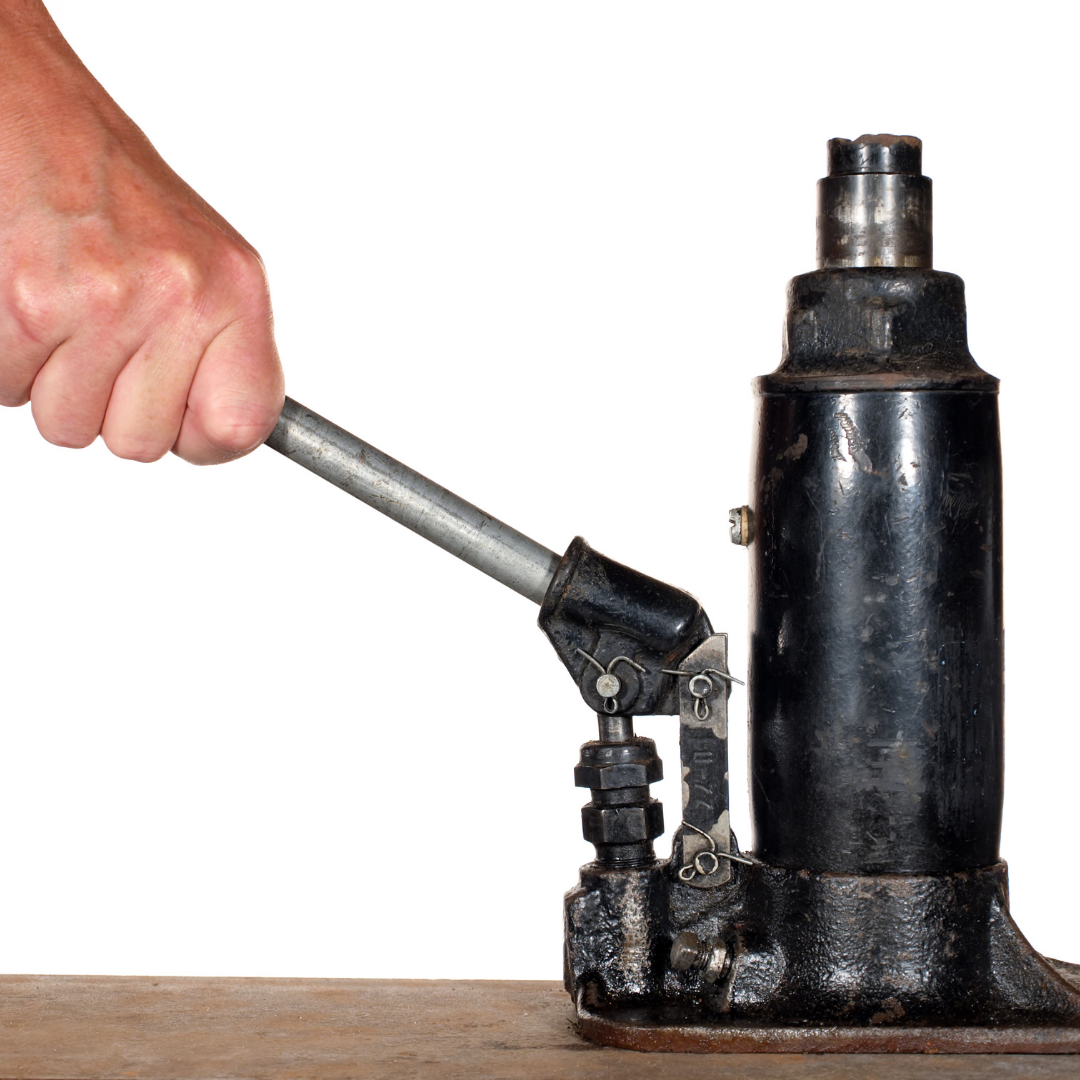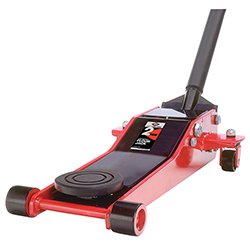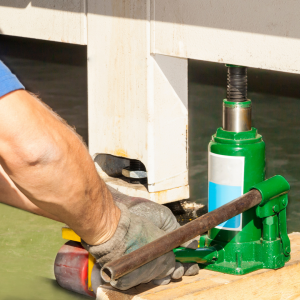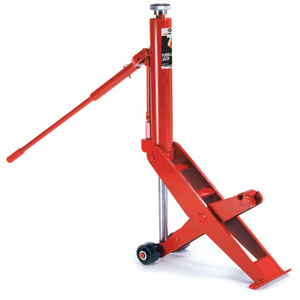
The Hydraulic Jack: A Guide to Heavy Lifting
Are you in the market for a hydraulic jack and not sure which one best suits your needs? Well, fear not, because we’ve got you covered!
Choosing the right hydraulic jack is crucial for any heavy lifting task, whether it’s in your garage, workshop, or industrial setting. In our latest blog post, we’re going to break down the essential factors you need to consider to make an informed decision.
From load capacity to lifting height and portability, we’ll guide you through the process of finding the perfect jack that suits your specific needs. So, let’s dive in and discover how to make lifting a breeze with the right hydraulic jack!

Looking for High Quality Hydraulic Jacks in the Grand Rapids Area?
Understand Your Requirements: How to Choose the Best Hydraulic Jack
Load Capacity
When it comes to choosing a hydraulic jack, it’s essential to assess your specific needs and applications to ensure you make the right decision. Start by evaluating the load capacity you require. Consider the maximum weight you’ll be lifting and select a jack that can comfortably handle that load.
Lifting Height
Consider the lifting height as well. Measure the distance between the ground and the objects you’ll be lifting to ensure the jack’s lifting range matches your needs.
Portability
Portability is another crucial factor to consider. If you’ll be using the jack in different locations or need to transport it frequently, look for a model that is lightweight and easy to move around. By taking these factors into account, you can find a hydraulic jack that meets your specific requirements, making your lifting tasks safer and more efficient.
Types of Hydraulic Jacks
Floor Jacks
First on our list are floor jacks, a popular choice in the automotive industry. Floor jacks, as the name suggests, are designed to be used on the floor.
They are robust and powerful, capable of lifting heavy loads with ease. Their wide base provides stability, making them ideal for lifting vehicles and machinery.
Whether you’re changing a tire or performing repairs under a car, a floor jack will offer the necessary lifting capacity, durability, and maneuverability.

Scissor Jacks
Next on our list are scissor jacks. These jacks are compact, lightweight, and extremely portable. They consist of a mechanical linkage that expands and retracts to lift and lower loads.
Scissor jacks are commonly found in most vehicles as a part of the standard equipment. While they may not have the same lifting capacity as floor jacks, they are handy for emergency situations like changing a flat tire on the side of the road.
Due to their small size, they are also convenient for occasional use in home garages or workshops.
Bottle Jacks
For those who require even greater lifting heights, hi-lift jacks are the go-to choice. Hi-lift jacks, also known as farm jacks or off-road jacks, possess a long lifting arm that allows for higher elevation.
They are commonly used in off-road adventures and are especially popular among off-road enthusiasts and farmers. Hi-lift jacks offer versatility in lifting not only vehicles but also heavy equipment, fence posts, and even tree trunks.
With their rugged construction and impressive lifting capabilities, these jacks are designed to handle demanding tasks in challenging environments.


Forklift Jacks
Now, let’s move on to forklift jacks. As the name suggests, these jacks are specifically designed for forklifts. They are essential tools for maintenance and repairs of forklifts, enabling technicians to lift the forks and perform necessary inspections or repairs underneath.
Forklift jacks often come with adjustable heights and specialized features to cater to the specific requirements of different forklift models.
They ensure safety and convenience during maintenance, reducing downtime and increasing overall efficiency.
Transmission Jacks
Lastly, we have transmission jacks, which play a crucial role in the automotive industry. These jacks are specifically designed to remove and install transmissions.
Transmission jacks provide stability and balance, allowing technicians to safely remove heavy transmissions from vehicles for repairs or replacements. They often come with adjustable arms and swivel capabilities, ensuring precise positioning and making the process much more manageable.
Transmission jacks are widely used in auto repair shops and garages, providing a reliable solution for transmission-related tasks.
Load Capacity and Lifting Height
When it comes to selecting the right equipment for your lifting and material handling tasks, two critical factors to consider are load capacity and lifting height. These aspects hold significant significance in ensuring efficient and safe operations within your specific requirements. Let’s delve into each factor to understand their importance and how to determine the appropriate load capacity and lifting height for your needs.
What is Hydraulic Jack Load Capacity?
Load capacity refers to the maximum weight that a lifting device or equipment can safely handle. It is crucial to determine the load capacity because exceeding it can lead to equipment failure, accidents, and potential damage to the goods being lifted. On the other hand, selecting a lifting device with a significantly higher load capacity than your requirements may result in unnecessary costs and inefficient use of resources. Therefore, understanding the weight of the loads you will be lifting regularly is vital to ensure you choose equipment that can handle them safely and effectively.
What is Hydraulic Jack Lifting Height?
Lifting height, on the other hand, refers to the maximum vertical distance that a lifting device can reach. It is equally important as load capacity because it determines how high you can lift your loads to perform various tasks. Whether you need to stack materials on tall shelves or load/unload containers, selecting the appropriate lifting height is crucial for maximizing productivity and avoiding any constraints that may hinder your operations. It is important to consider not only the maximum lifting height required but also factors such as the clearance needed to avoid obstacles, the reach required for specific tasks, and the vertical space available in your working environment.
How to Determine Load Capacity and Lifting Height for a Hydraulic Jack
To determine the appropriate load capacity and lifting height for your needs, you should begin by assessing your typical lifting requirements. Consider the weights of the loads you handle on a regular basis and identify the maximum weight you may encounter. This will help you establish a baseline load capacity requirement. Additionally, evaluate your workspace to understand the vertical space available and any height restrictions that may affect your lifting operations. Measure the distances you need to reach and factor in any potential obstacles.
It is also crucial to account for potential future needs and any variability in your lifting requirements. Anticipating growth or changes in your operations will allow you to select equipment with a higher load capacity and lifting height to accommodate any potential expansion or alterations in your tasks. Consult with industry professionals or equipment suppliers who can provide expert advice and guidance tailored to your specific needs.
Portability and Storage
Portability plays a crucial role when it comes to selecting a hydraulic jack, and it’s important to understand its significance for your needs. A portable hydraulic jack offers the advantage of mobility, allowing you to easily transport and use it in various locations. Whether you’re a professional mechanic working on different job sites or a DIY enthusiast tackling projects around your home, having a portable jack can make your tasks much more convenient and efficient.
When considering portability, factors such as weight, size, and mobility come into play. The weight of the hydraulic jack is essential because you’ll need to move it around and transport it when necessary. A lightweight jack is easier to handle and carry, reducing the strain on your body. It’s important to find a balance between weight and load capacity, ensuring that the jack is sturdy enough to lift your intended loads without being overly cumbersome.
The size of the hydraulic jack also affects its portability. A compact and space-saving design allows for easy storage in your vehicle or workshop. It’s especially beneficial if you have limited storage space or need to transport the jack frequently. A smaller size makes it more manageable to maneuver the jack in tight spaces, making it suitable for various applications.
Additionally, mobility is a crucial aspect of portability. Look for features such as swivel casters or wheels that enable smooth movement and positioning of the jack. This ensures that you can effortlessly move the jack to the desired location without straining yourself or damaging the flooring. Some jacks also come with handles or grips for easy carrying, enhancing their portability.
Safety Features
Safety should always be a top priority when it comes to selecting a hydraulic jack. The importance of prioritizing safety cannot be emphasized enough, as using an unsafe or inadequate jack can lead to accidents, injuries, or even catastrophic failures. When choosing a hydraulic jack, it’s crucial to look for essential safety features that will provide peace of mind and ensure secure operations.
One of the key safety features to consider is overload protection. This feature is designed to prevent the jack from being overloaded beyond its intended capacity. It acts as a safeguard against excessive weight, helping to avoid structural damage, instability, or sudden collapses. Overload protection mechanisms can include built-in systems that limit the maximum load or alarms that alert you when the jack is nearing its maximum capacity. By having this feature, you can work confidently, knowing that the jack will not be pushed beyond its safe limits.
Another important safety feature is the inclusion of safety valves. These valves serve as a protective mechanism that prevents the jack from experiencing sudden drops or uncontrollable descent. They regulate the hydraulic pressure and control the rate of descent, ensuring a controlled and safe lowering of the load. In the event of a hydraulic system failure, safety valves prevent the load from dropping rapidly, minimizing the risk of accidents or injuries. Look for jacks with reliable safety valves to enhance the overall safety of your lifting operations.
In addition to these safety features, it’s essential to follow proper usage guidelines and adhere to recommended safety practices. This includes using the jack on stable and level surfaces, positioning the load correctly, and ensuring that the load is evenly distributed on the jack’s lifting points. Regular inspections, maintenance, and servicing of the jack are also crucial to identify any potential issues and address them promptly.
Seek Expert Advice
When it comes to investing in hydraulic equipment, seeking expert advice can truly make a difference. At All Phase, we understand the intricacies involved in choosing the perfect hydraulic products for your needs. Our experienced professionals are dedicated to offering personalized guidance and support, ensuring that you can make well-informed decisions. Consulting with industry experts or seasoned users in the field can save you both time and money, guaranteeing that you select the ideal equipment that precisely meets your requirements. Their vast knowledge and expertise will help you navigate through the abundance of options available, providing valuable insights into the latest technologies, safety features, and best practices. We strongly encourage you to reach out to these experts before making any purchase decision, as they can offer the necessary guidance to help you make the most suitable choice for your hydraulic needs.
Looking for a Hydraulic Expert Near Grand Rapids Michigan?
Conclusion
While the process of choosing the right hydraulic jack may seem overwhelming due to the countless options available, seeking expert advice can be incredibly valuable. Consult with industry professionals or seasoned users who can provide personalized guidance and share their expertise. They can help you navigate through the available options, recommend the latest technologies, and guide you toward the most suitable choice for your specific needs.
At All Phase, we understand the importance of selecting the perfect hydraulic products, and our experienced professionals are dedicated to offering the support and guidance you need. Don’t hesitate to reach out to industry experts or consult with us to ensure that you make a well-informed decision and invest in hydraulic equipment that will meet and exceed your expectations.
With the right hydraulic jack in hand, you’ll be equipped to tackle any heavy-lifting task with ease and confidence. So go ahead, and make your lifting operations safer, more efficient, and more productive by choosing the perfect hydraulic jack for your needs. Happy lifting!


